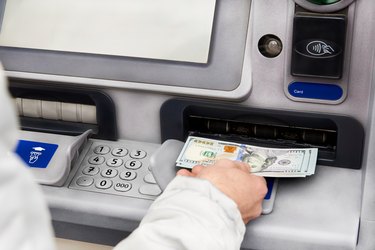How Long Does It Take to Get Direct Deposit

Making deposits requires following a few simple steps.
Image Credit: ViktoriiaNovokhatska/iStock/GettyImages
Making a deposit into one of your financial accounts should be an easy, safe process you can repeat over and over again whenever you need to. Whether you're making a cash deposit or using an app or your computer to transfer funds from one account to another, the process should be very simple and secure.
A review of the steps for making different types of bank deposits will help you make sure you get your money where you want it to go and have it available sooner than later.
Types of Bank Deposits
You can deposit cash into checking and savings accounts at a brick-and-mortar location, using an ATM or using an app or online portal. If you make a deposit at a bank or credit union, you'll use a counter deposit slip to submit the transaction. If there's a line of people waiting, look for a kiosk or other area where counter deposit slips are available so you can begin filling one out while you're waiting your turn.
You'll usually need to fill in your name, the date, your account number, the amount of your deposit and the cash and check amounts. For example, if you're depositing $100 in cash, you'll just need to write that amount under the cash area on the deposit slip. If you're depositing a $100 check, you'll need to write the amount in that area. If you're depositing a check and cash, you'll need to enter both amounts separately. You only make one line entry for your cash, but must list each check you're depositing separately (by writing the amount of each check).
If you are depositing a check, you'll need to endorse the back of the check, which means signing it. Look on the back for the area that tells you where to place your signature – usually above a line toward one side of the check. For extra security, write, "For deposit only" on the check if you don't want any cash back. This way, if you endorse the check early and then lose it, no one can cash it and get the money.
If there's no one in line, you might be able to tell the teller you'd like to make a deposit and hand her your debit card and the cash or check(s) you want to deposit. She'll fill out the deposit slip for you and make the transaction.
If you're requesting cash back, such as depositing a $100 check and asking for $40 of it (depositing the other $60 into your account), you'll need to enter that on the deposit slip and add your signature to the slip.
Using a Check-Scanning App
If you don't want to visit your bank in person, you might be able to deposit a check using your phone. You'll need to set up online banking on your phone by downloading the bank's app and following the steps to set up your access.
You'll log in to your account, then navigate to the link for making deposits. Choose the feature for depositing a check. You will need to endorse the back of your check and take a photo of the front and back of the check.
The app will show you the two photos and then confirm the amount you want to deposit. Click "OK" or "Approve" and make the deposit. Wait a few minutes and check your account to see if the check has been deposited. The transaction will show as pending until the check clears the other bank.
Using an ATM
If your account provides you with an ATM or debit card, the deposit process is simple. Put your card into the ATM and follow the instructions. This usually includes entering your Personal Identification Number (PIN), choosing "Make a Deposit," choosing "Deposit Cash or Deposit Check," putting the cash or endorsed check into the correct slot, verifying the amount is correct and choosing whether or not you want a receipt.
Transferring Money Between Accounts
You can deposit money from one account to another following the online instructions provided by your financial institution. For example, if you own a small business and have business and personal checking accounts, you might have clients deposit money into your business account. When you're ready to take your personal pay, you can transfer money from your business account to your personal account. This is technically a transfer, not a deposit. You'll need to link your two accounts, whether they are at the same or different banks.
Third-Party Apps
You can pay or get paid by others using apps like Zelle, Google Pay, Cash App and PayPal. When you pay someone, you're depositing money into their account. You'll just need to download the app and follow the directions – you won't need to link accounts.
How Long Does It Take to Get Direct Deposit
Source: https://www.sapling.com/4473720/make-deposit